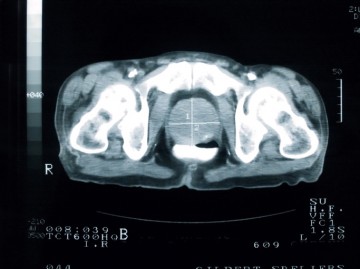Health Articles
Every man diagnosed with prostate cancer is unique since the cancer acts differently in each man. One man’s prostate cancer may be very slow-growing while another’s is more aggressive. To help determine how aggressive a man’s prostate cancer is, physicians turn to the use of what is called a Gleason score. It was Dr. Donald Gleason, a Minnesota pathologist who in 1966 developed a grading system for prostate cancer to help grade the aggressiveness of prostate cancer tissue. To this day, the Gleason score still bears his name as a system used to help physicians predict the likely outcome of prostate cancer and what course of treatment to use.
How is the Gleason scored achieved?
When a man has a biopsy of his prostate, samples of prostate tissue are removed by core needle biopsy. During this procedure, a doctor inserts a thin, hollow needle into the prostate gland. As the needle is pulled out, it removes a small cylinder of prostate tissue called a core. To get as accurate of a reading as possible, several cores from different areas of the prostate will be sampled.
The tissue is studied under a microscope by a specialized doctor called a pathologist who will then send a report to the doctor giving a diagnosis of each core sample taken. The pathologist determines the Gleason score which is made up of two numbers – a primary grade and a secondary grade. The primary grade determines where the cancer is most prominent and the secondary grade determines where the second most prominent area the cancer is found.
The primary grade and secondary grade will be a number ranging from 1-5. This is based on how much the cells in the cancerous tissue look like normal prostate tissue under a microscope which is called a Gleason system.
This is how the pathologist may grade the tissue:
- If the cancerous tissue looks a lot like normal prostate tissue, a grade of 1 is assigned
- If the cancer cells and their growth patterns look abnormal, a grade of 5 is assigned
- Grades 2 through 4 have features in between those extremes.
It is not unusual for prostate cancer tumors to have areas with different grades.
A score of 1 is the least aggressive and a score of 5 is the most aggressive. A grade three seldom has metastases, but metastases are common with a grade four or five.
The primary and secondary numbers are added together to come up with a Gleason score ranging from 2-10. The Gleason score is an indicator of how likely the cancer will spread – the higher the score, the higher the grade of the tumor. High grade tumors generally grow more aggressively or have already spread outside the prostate (metastasized). Low grade tumors have a low Gleason score and are likely to be slow-growing and may not pose a significant threat to a man in his lifetime
A score 2 - 6 or G1 is considered low grade with well-differentiated cells. The tumor is in an early stage meaning it is unlikely to grow or spread to other tissues or organs for many years. Men with low grade prostate cancer are often monitored with active surveillance and have frequent checkups that may include PSA tests, digital rectal exams, ultrasound or other imaging along with repeat biopsies.
A score of 7 or G2 is considered intermediate or has moderately-differentiated cells. Most prostate cancers fall into this category, making it difficult to predict their development. This tumor is in between an early stage and a more aggressive stage. Again, it usually means the cancer is unlikely to grow or spread for many years but a doctor may recommend treatment such as surgery or radiation depending upon the patient’s age and overall health. If treated during this intermediate stage, it gives a man the best outcome possible and can extend years to his life.
A score of 8 – 10 or G3 is considered high grade with poorly-differentiated cells. This means the tumor is in an advanced stage and the cancer is considered high-risk. If the cancer has not spread beyond the prostate, it is still possible to treat it successfully which is usually done with surgery. Sometimes radiation is necessary after surgery if prostate cancer cells have been found beyond the prostate gland.
In conclusion
The Gleason score is only one piece of information a doctor will use in interpreting the presence of prostate cancer. Biopsy reports also typically include the number of biopsy core samples that contain cancer, the percentage of cancer in each of the cores, and whether the cancer occurs on one side or both.
Whatever treatment approach a doctor determines – surgery, radiation, or active surveillance – they will also recommend follow-up tests, including repeated PSA tests and biopsies which are used to detect signs that the cancer has returned or progressed. The longer a man goes with no sign of a change, the less frequently he’ll need follow-up tests.

